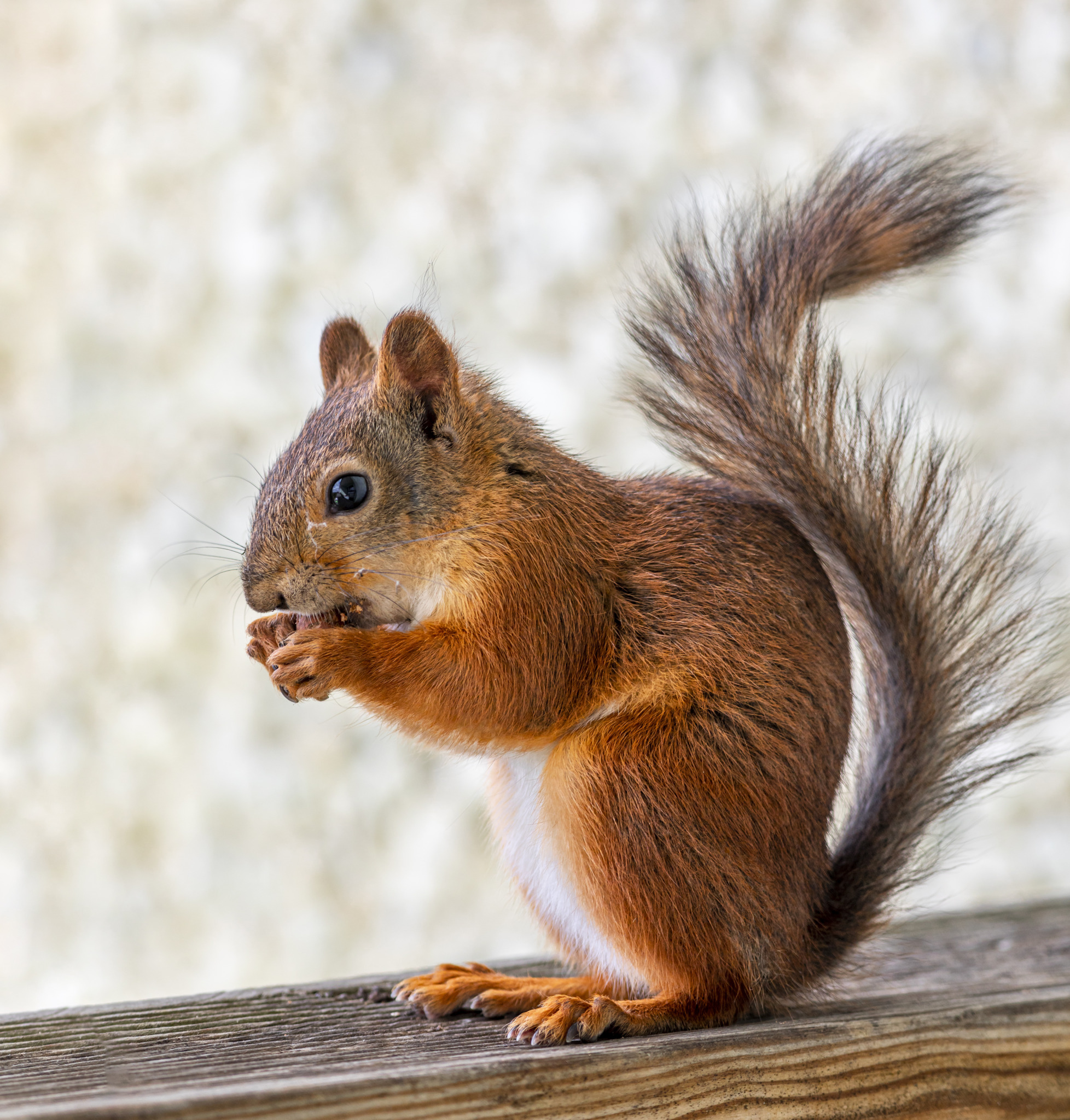The Red Squirrel (Sciurus vulgaris) is a species of tree squirrel native to Eurasia. Here are some key points about the Red Squirrel:
- Physical Description: Red Squirrels are small mammals with reddish-brown fur on their upperparts and white or cream-colored fur on their undersides. They have distinctive ear tufts, particularly noticeable in the winter months. Their tails are bushy and often have a reddish hue. Red Squirrels typically weigh between 250 to 350 grams (8.8 to 12.3 ounces).
- Habitat: Red Squirrels inhabit a variety of forested habitats, including coniferous, deciduous, and mixed woodlands. They are commonly found in areas with abundant tree cover, such as forests, woodlands, parks, and gardens.
- Diet: Red Squirrels are primarily herbivorous and feed on a diet consisting mainly of seeds, nuts, berries, fruits, and tree buds. They are known to cache food for later use, storing nuts and seeds in various locations throughout their territory.
- Behavior: Red Squirrels are diurnal, meaning they are most active during the daytime. They are agile climbers and spend much of their time foraging in trees. Red Squirrels are territorial animals and may aggressively defend their territories, particularly against other squirrels.
- Reproduction: The breeding season for Red Squirrels typically occurs in late winter or early spring, with mating taking place from January to April. After a gestation period of around 38 to 39 days, females give birth to a litter of typically 2 to 6 kittens, although litter sizes can vary. The young squirrels, called kits or kittens, are born hairless and blind and are cared for by the mother until they are old enough to venture out on their own.
- Conservation Status: Red Squirrels are facing various threats, including habitat loss, fragmentation, and competition with introduced species such as the invasive Eastern Gray Squirrel (Sciurus carolinensis). In some regions, Red Squirrels have experienced declines due to the spread of squirrelpox virus, which is carried by the Eastern Gray Squirrel but does not affect them. As a result, Red Squirrels are considered a species of conservation concern in many parts of their range.
- Cultural Significance: Red Squirrels have cultural significance in many regions and are often featured in folklore, literature, and art. They are also admired for their acrobatic abilities and playful behavior.
Overall, the Red Squirrel is an iconic species of the Eurasian forests, known for its vibrant coloration, bushy tail, and active lifestyle. Conservation efforts aimed at preserving their habitats and managing threats are essential for ensuring the long-term survival of this species.
Visited 863 times, 2 visit(s) today
Views: 2765
Subscribe to the newsletter:
